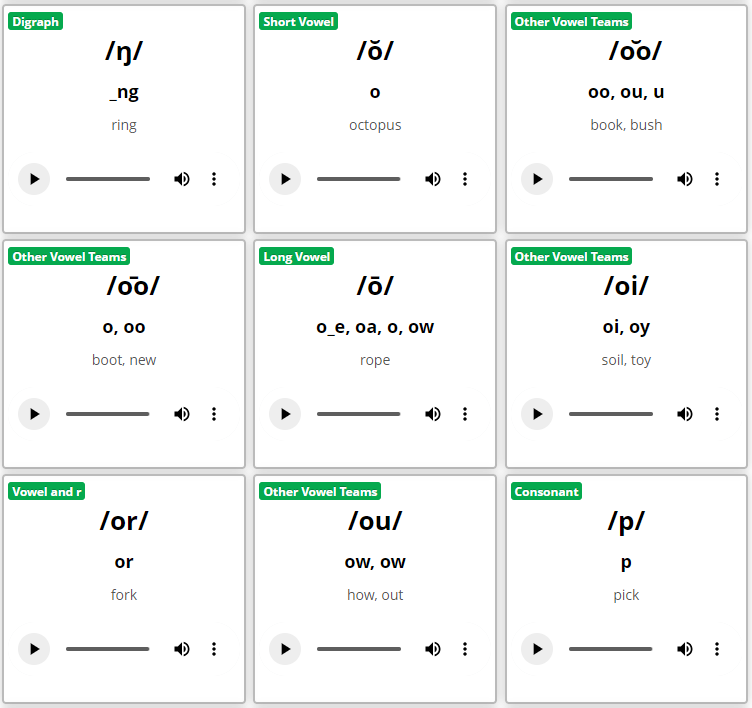 A common way to assess students on phonics sounds is to see whether they can decode nonsense words like “moud” or “cyl.” When scoring these assessments, teachers must often rely on their own knowledge of phonics patterns to determine if the student’s pronunciation is correct. But let’s admit it: some of us might be a little rusty. Should “moud” rhyme with “loud” or with “load”? Should “cyl” be pronounced “kyle” or “sill”?
A common way to assess students on phonics sounds is to see whether they can decode nonsense words like “moud” or “cyl.” When scoring these assessments, teachers must often rely on their own knowledge of phonics patterns to determine if the student’s pronunciation is correct. But let’s admit it: some of us might be a little rusty. Should “moud” rhyme with “loud” or with “load”? Should “cyl” be pronounced “kyle” or “sill”?
Symbols and diacritical marks cause even more confusion. Does anyone really know for sure how we pronounce the notorious “ə” sound?
If you’ve ever had questions about how certain phonics sounds should be pronounced, our Audio Examples of Phonics Sounds page is your new best friend. This page includes an audio demo of the phonics sounds and patterns you and your students will come across in phonics instruction and assessment. It’s also a handy guide to interpreting those breves (˘), and macrons (−). Because let’s face it, even the phonics experts have a hard time keeping those things straight! Just click the play button next to each letter/pattern, and you’ll hear the correct pronunciation.
If you work with students on literacy, bookmark this page now—we guarantee you’ll come back to it. Be sure to share this resource with fellow educators. Or maybe you have that one weird friend who wants to geek out on the nuances of the schwa sound? Feel free to share it with them too.
 Share your student’s success story—nominate him or her for our Star of the Month award. Win a Barnes & Noble gift card for the student and a Read Naturally gift certificate for your class!
Share your student’s success story—nominate him or her for our Star of the Month award. Win a Barnes & Noble gift card for the student and a Read Naturally gift certificate for your class!
Post a New Comment